
11 minute read
LESSONS LEARNED


Advertisement
The challenges, surprises, and successes of a school year unlike any other.
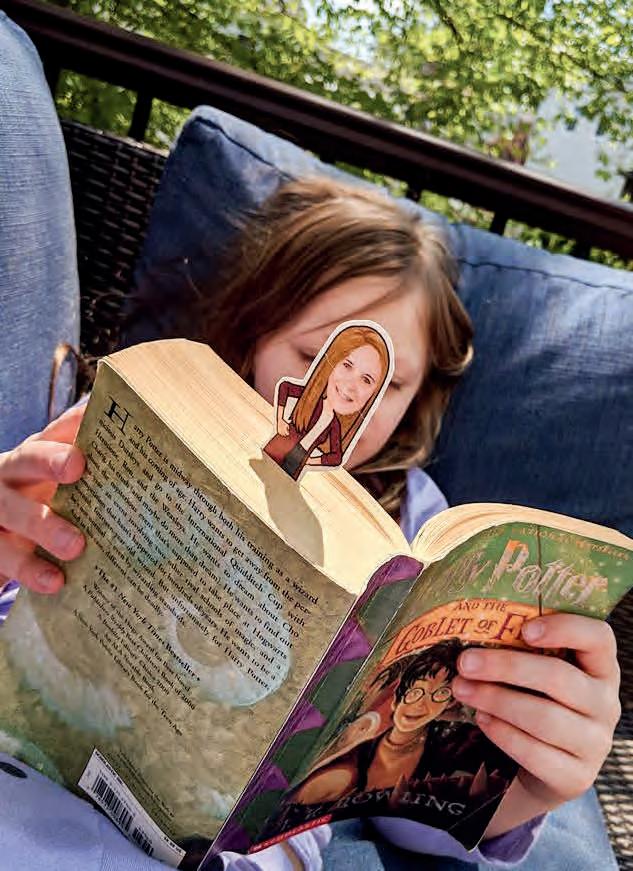
At the time, no one knew that March 13 would be the last “normal” day of the 2019-2020 school year at Independence—the last day teachers and students would spend together in-person and on campus. And no one knew what was to come: the job of completely reinventing the Independence experience to work in the virtual world.
As it happened, the need to adapt came suddenly. Just as faculty began to plan for the possibility that in-person learning might be interrupted at some point, that point had arrived.
“It was all new and very challenging,” says Head of School Vicky Yatzus. “But we committed with full force, we got feedback on our efforts as we went, and we got better at it as the weeks progressed. As in any challenging situation, we looked for lessons we could carry forward and any opportunities for wins.”
Those opportunities, she says, ranged from the chance to accelerate technology adoption, to explore new approaches for assessing student achievement, and to think even more rigorously about the most effective ways to present curricular content.
Good Teaching
One of the most basic insights confirmed by the school’s sudden immersion in distance learning was, as several faculty members agreed, that “Good teaching is good teaching.” In other words, the most important skills and techniques Independence faculty members use to engage and empower students in person tend to be the same ones that are key to success in distance learning.
Middle school social studies teacher Tina Palmer concurs. “I tried to keep the same elements of our regular classes. I worked in the same ways to keep my students participating and found class discussions were essentially as active and productive as ever.”
Palmer cites a world mapping project, long a highlight of the sixth-grade curriculum, as an example. “I wondered how this would work with the kids at home and the distance keeping me from helping them in the ways I’m used to, but it turned out beautifully.”
The same proved true for the first-grade Mammal Zoo. Costumed raccoons and whales presented themselves via video rather than on campus, but on the upside, some were able to do so from habitats appropriate to their species.
Twists and Tweaks
None of this, however, should suggest that learning mediated through digital platforms was identical to the classroom experience. One fundamental reality to be confronted, says Bernadette Gilmore, director of academic innovation, is that distance learning is simply more distant. “Even adults have trouble staying focused as Zoom meetings wear on,” she says. “The research shows it, and we all know it.”
In response, administrators and individual teachers modified class schedules. “We would rarely be live and online for the full 48 minutes of a period,” Gilmore says. “We would use part of the time for independent work and shift portions of lessons to asynchronous delivery.”
This was particularly important for young students. “It’s not developmentally appropriate or healthy for younger children to have extended periods of screen time,” she explains. “We just could not do that.”
Effective teaching recognizes and responds to the natural limits of learners’ attention spans, and when working by Zoom, those attention spans can be particularly short. Mike Gwaltney, a nationally respected expert on distance learning who conducted a multi-day professional development workshop with Independence faculty, cites six minutes as an
important benchmark. A single video or activity running longer than this limit seriously risks losing its audience.
Fourth-grade teacher Sarah Gilmore agrees. “You have to use a multitude of ways of reaching your students,” she says, explaining the need to change approaches frequently, for instance, shifting from whole-class activities to breakout rooms, from group discussion to independent work, from live interaction to asynchronous learning.
Unfortunately, she says, recording video segments for asynchronous viewing proved to be the single most difficult challenge of the whole distance learning transition. Looking into a camera and delivering content with no chance to draw on students’ energy and reactions took effort and imagination. “I had to pull out all my old high school acting tricks,” she says. “I also got my dog involved. At one point, when I was recording a segment about adverbs and prepositions, she got to go on a very vividly described adventure in the woods.”
Another important adjustment was to scale back expectations about the total scope of content that was possible to cover— prioritizing, focusing in, and aiming for depth of understanding. “There’s just no way we could move as fast over as much material,” Sarah Gilmore says. “But that doesn’t mean we couldn’t do good, meaningful work.”
Reassessing Assessment
Faculty members agree that one of the greatest challenges of working remotely is the difficulty of reading student reactions. In a physical classroom, good teachers sense when students are keeping up and when it’s time to pause and review.
But, as Yatzus points out, “Zoom is very flat. You’re looking at a grid of tiny faces, and they are very hard to interpret.”
In response, teachers came to rely on more frequent and different forms of assessment, particularly formative measures designed to allow students to demonstrate—and to themselves understand—how well they were comprehending the material as a lesson or unit progressed. (These are in contrast with summative assessments, like exams, that come at the end of a unit, too late for teachers to make real-time adjustments.)
“The goal is to see what the students know,” Sarah Gilmore says. “It’s also to let them use their strengths and show them off—one more way to keep them engaged and feeling positive.”
THE STUDENT SIDE OF THE STORY

To gather students’ insights on the distance learning experiences, a questionnaire was created for middle schoolers. Here’s a sample of the thoughts they shared.
What was your favorite part of distance learning?
Probably waking up later in the morning.
Definitely waking up later.
I had more time during the day to really work on some subjects I was confused on and put in that extra time.
My favorite part of distance learning was the ability to track my homework and schedules very easily—and not having to dress up that seriously.
My favorite part was the connection via Zoom. I was worried that I would have no contact whatsoever with my school friends. Many schools did not offer Zoom, and I was grateful to get to see everyone during this hard time of lockdown.
Not being able to see/work with my friends. Doing work with a team makes the project so much better, and while there were breakout rooms in Zoom, they just weren’t the same.
My least favorite part was that we couldn’t really do hands-on projects together.
My least favorite part was the scheduling. Schedules were packed!
She and other teachers found student-made videos a particularly powerful tool, like the segment one eighth grader made to demonstrate her understanding of the causes of World War I—using an unusually articulate cow puppet as her narrator.
A Sense of Connection
Perhaps the most profound insight confirmed by the school’s shared experience of distance learning was one that transcends the purely academic. It is that connections between students and their friends and between students and their teachers are irreplaceable and essential to learning.
“Children learn best in social settings,” explains Bernadette Gilmore. “We know from research the power of the social and emotional components of school, but now we know it firsthand, too.”
She explains that faculty and staff realized early on they needed to set aside time specifically for nurturing personal connections—sparking dialogue, playing games, chatting with classmates. Independence has adopted a Pre-K through eighth-grade Social Emotional Learning (SEL) program, which Gilmore says has proven particularly important for students during this period of remarkable uncertainty. SEL focuses on self-awareness, self-management, social awareness, relationship skills, and decision-making, which can all help increase children’s resilience in times of stress.
The school also planned some surprise “drive-bys” in which faculty dropped off materials at students’ homes and said hi, fun events such as virtual field trips, and (thanks to a generous parent’s inspiration) even a virtual magic show.
Administrators also went to great lengths to plan a driveby celebration in place of graduation. But then, at the last minute, Delaware’s governor changed the regulations in place, making it possible for an on-campus event after all— and requiring that event to be instantly planned.
“It was wonderful that we had that opportunity,” says Yatzus. “And it underscored another vital lesson of this experience: the constant need for flexibility!”

What new technology skills did you learn through this experience?
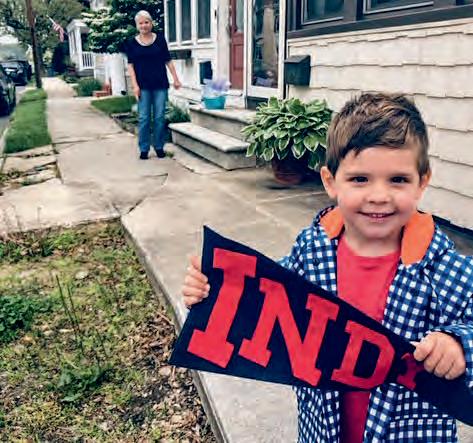
How to operate Zoom meetings easily and smoothly.
My typing has improved a lot. Also, I have learned all kinds of new ways to import a photo taken on your phone to put it on your laptop to turn in for a class.
I learned how to screen record, scan papers, and join Zoom.
I learned tips and tricks on Google Classroom and Zoom—shortcuts to manage the software faster and easier.
Do you have any suggestions for changing distance learning?
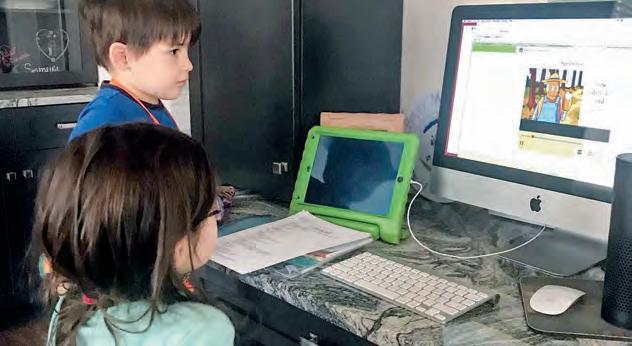
I would have more class/group projects, even though it would be harder.
First, I would limit the amount of Zoom. I would give 30-40 minutes of talking and then 30 minutes to finish classwork. I would also find a way to encourage more participation in Zoom so that more people would feel comfortable speaking.

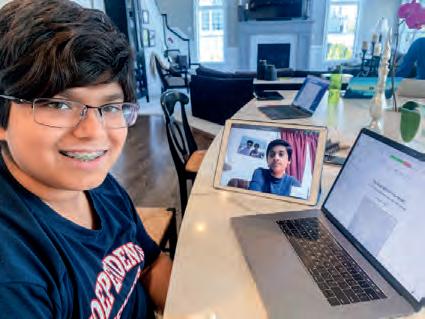
Best in Show—and Beyond
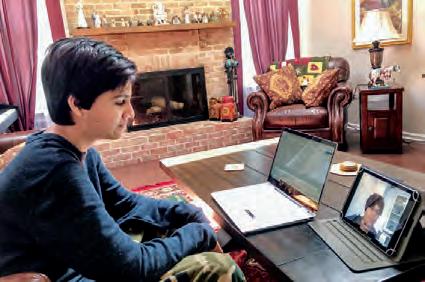
Eighth graders Rai Kahlon and Veer Pahwa earned first place and Best in Show honors for middle school competitors at the 25th Annual New Castle County Science Fair last spring. Their project, initially developed as part of Indy’s eighth-grade Consumer Product Showcase, was called “The Best Ball for Your Buck” and evaluated which brand of tennis balls provided the optimal value while meeting International Tennis Federation standards. The pair then moved on to the Delaware Valley Virtual Science Fair, presented by Drexel University, where they placed third to qualify for the Broadcom MASTERS (Math, Applied Science, Technology, and Engineering for Rising Stars), the nation’s top middle school STEM competition.
Visualizing the Power of Music
When the Newark Symphony Orchestra gave a (pre-pandemic) performance at Independence, art students in Early Childhood II and grades 3 and 6 drew inspiration from it to create beautiful visual works related to the featured musical program. Their colorful interpretations of stained-glass windows brought Ottorino Respighi’s “Church Windows” to life—and to light—in a new way.
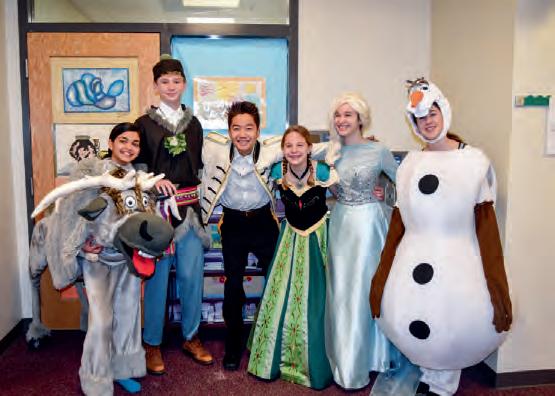
A Broadway Favorite Comes to Visit
What could combine a loyal reindeer, a goofy snowman you can’t help but love, and memorable, musical lessons in sisterly devotion and courage? It had to be the school’s full-costume production of Disney’s “Frozen Jr.” in the Gore Auditorium early last spring. To build excitement, the cast and crew visited classrooms throughout the building the day before the show’s debut.
Like families everywhere today, those at Independence must navigate the multidimensional wonders and challenges of life in a digital age. To provide some useful insight, the school screened a timely documentary on this subject: “Screenagers Next Chapter: Uncovering Skills for Stress Resilience.” As the title suggests, this follow-up
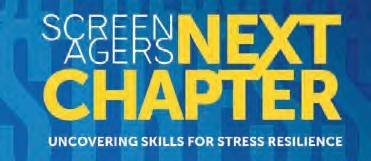

MY INDY STORY

to “Screenagers: Growing Up in the Digital Age” explores ways of helping young people thrive in a world where virtual interactions play an increasingly important role and can bring considerable stress. Presented by CWILTM (the school’s Center for Wellness, Innovation and Learning) and sponsored by The Beau Biden Foundation for the Protection of Children and SafeStudents Online, the event included a panel discussion and drew more than 400 students, parents, educators, and interested members of the community.
Five and Counting
Any school would be proud to claim the honor once; Independence can now do so for the fifth time in six years. Yes, another Independence alumnus has been honored as a U.S. Presidential Scholar. He is Umar Aulia (Independence Class of 2016), a recent graduate of Tower Hill School. Umar is one of two students from Delaware singled out by the White House Commission on Presidential Scholars for excellence in the classroom and beyond. He attends Princeton University.

The Show Goes On
Music—both choral and instrumental—is a cherished and integral component of the Independence experience. Thanks to the creativity of our music department, led by Daniel Kitching ’01, director of bands, and Tae Sakamoto, orchestra and choral director, students were able to continue their music instruction and practices throughout our spring experience of distance learning. Making the best use of available technology, band, choir, and orchestra students were ultimately able to collaborate to produce a virtual spring concert. The event was recorded using Zoom and then scheduled for the school community to share via YouTube on June 2.





